- Accueil
- Pages cachées
- 01 AVRIL 2024 NEWS
01 AVRIL 2024 NEWS
INSTITUT SUPERIEUR D'ANTHROPOLOGIE
INSTITUT OF ANTHROPOLOGY
COURS ONLINE – COURS A DISTANCE
INSCRIPTIONS OUVERTES
REGISTER NOW
CURACAO- 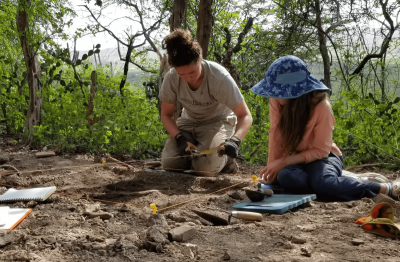 - New research co-led by Simon Fraser University and the National Archaeological Anthropological Memory Management (NAAM Foundation) in Curaçao extends the earliest known human settlement of Curaçao by centuries, adding pieces to the puzzle of pre-Colombian Caribbean history. Findings from the team, published in the Journal of Coastal and Island Archaeology, place human occupation of Curaçao, an island in the southern Caribbean, as far back as 5735 – 5600 cal BP — up to 850 years earlier than previously thought. This updated timeline was determined by radiocarbon dating charcoal collected from an Archaic period site at Saliña Sint Marie — what is now the earliest known archaeological site on the island — using accelerated mass spectrometry. Christina Giovas, an associate professor in SFU’s Department of Archaeology and co-lead on the study, explains that the settlement of the Caribbean and the origin of its peoples is still highly debated. “What this new information does is push the initial exploration in this region back to a time where other islands to the north of Curaçao are also being settled. This suggests that the movement of people from the continental mainland into those more northern islands might have entangled with some of the movement of the people into Curaçao,” says Giovas.
- New research co-led by Simon Fraser University and the National Archaeological Anthropological Memory Management (NAAM Foundation) in Curaçao extends the earliest known human settlement of Curaçao by centuries, adding pieces to the puzzle of pre-Colombian Caribbean history. Findings from the team, published in the Journal of Coastal and Island Archaeology, place human occupation of Curaçao, an island in the southern Caribbean, as far back as 5735 – 5600 cal BP — up to 850 years earlier than previously thought. This updated timeline was determined by radiocarbon dating charcoal collected from an Archaic period site at Saliña Sint Marie — what is now the earliest known archaeological site on the island — using accelerated mass spectrometry. Christina Giovas, an associate professor in SFU’s Department of Archaeology and co-lead on the study, explains that the settlement of the Caribbean and the origin of its peoples is still highly debated. “What this new information does is push the initial exploration in this region back to a time where other islands to the north of Curaçao are also being settled. This suggests that the movement of people from the continental mainland into those more northern islands might have entangled with some of the movement of the people into Curaçao,” says Giovas.
Human Activity on Curaçao Began Centuries Earlier Than Previously Believed - Arkeonews
AZERBAIDJAN – 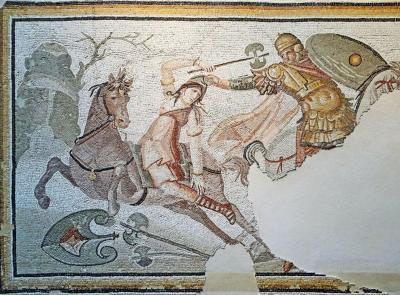 Nakhchivan - During excavations at the Bronze Age burial ground located in Nakhchivan, Azerbaijan, archaeologists unearthed graves containing female remains along with weapons such as razor-sharp arrowheads, bronze daggers, and maces. Amazons were known for their skill in using bows and arrows and for their refusal to associate with men in their environment, as reported by The Guardian. The ancient Greeks’ mythical archenemies were amazons, fierce warrior women who lived on the outskirts of the known world. Heracles and Achilles demonstrated their valor in duels against Amazon queens, while the Athenians celebrated their victory over a powerful Amazon army. Cyrus of Persia, Alexander the Great, and the Roman general Pompey all faced off against the Amazons. Though long lost to myth, archaeologists are finding more and more evidence that these horse-riding, bow-wielding nomads, who hunted and battled just like men, actually existed. Archaeological excavations shedding light on the millennia-old legend were carried out in the city of Nakhchivan at a Bronze Age site. Graves of women buried with weapons were found there. Among these findings were sharp arrows, a bronze dagger, and a mace. Some skeletons showed signs that the women actively used bows and arrows. Based on these facts, scientists concluded that these women could have been Amazons who lived around 4000 years ago. Historian Bettany Hughes told the Observer: “It shows that there’s truth behind the myths and legends of ancient Greece. If we’re talking about a culture that crosses the Caucasus and the Steppe, which is what all the ancients said, obviously you need other remains.” The evidence mentioned by historian Bettany Hughes is of great importance when previously discovered findings are added to it. For instance, in 2019, the remains of four female warriors buried with arrowheads and spears were found in Russia. In 2017 the remains of a woman who most likely died from wounds sustained in battle were discovered by Armenian archaeologists; an arrowhead was discovered embedded in her leg. Additionally, the remains of a woman who had been buried with a dagger were discovered in the early 1990s close to the Kazakhstani border. Hughes stated that some of the skeletons reveal that the women had used bows and arrows extensively. She explained that their fingers displayed deformities, likely from prolonged arrow usage, suggesting sustained and intensive practice. According to her observations, these changes in finger joints couldn’t have solely resulted from hunting activities. She further mentioned that the bone evidence revealed clear signs of extended time spent in the saddle, with women’s pelvises appearing to have widened due to horseback riding. Clearly, the shape of their bones reflected the impact of their lifestyle. In addition to weapons, archaeologists discovered a carnelian ornament in one of the graves, which is a semi-precious stone commonly worn by high priestesses and used as a status symbol.
Nakhchivan - During excavations at the Bronze Age burial ground located in Nakhchivan, Azerbaijan, archaeologists unearthed graves containing female remains along with weapons such as razor-sharp arrowheads, bronze daggers, and maces. Amazons were known for their skill in using bows and arrows and for their refusal to associate with men in their environment, as reported by The Guardian. The ancient Greeks’ mythical archenemies were amazons, fierce warrior women who lived on the outskirts of the known world. Heracles and Achilles demonstrated their valor in duels against Amazon queens, while the Athenians celebrated their victory over a powerful Amazon army. Cyrus of Persia, Alexander the Great, and the Roman general Pompey all faced off against the Amazons. Though long lost to myth, archaeologists are finding more and more evidence that these horse-riding, bow-wielding nomads, who hunted and battled just like men, actually existed. Archaeological excavations shedding light on the millennia-old legend were carried out in the city of Nakhchivan at a Bronze Age site. Graves of women buried with weapons were found there. Among these findings were sharp arrows, a bronze dagger, and a mace. Some skeletons showed signs that the women actively used bows and arrows. Based on these facts, scientists concluded that these women could have been Amazons who lived around 4000 years ago. Historian Bettany Hughes told the Observer: “It shows that there’s truth behind the myths and legends of ancient Greece. If we’re talking about a culture that crosses the Caucasus and the Steppe, which is what all the ancients said, obviously you need other remains.” The evidence mentioned by historian Bettany Hughes is of great importance when previously discovered findings are added to it. For instance, in 2019, the remains of four female warriors buried with arrowheads and spears were found in Russia. In 2017 the remains of a woman who most likely died from wounds sustained in battle were discovered by Armenian archaeologists; an arrowhead was discovered embedded in her leg. Additionally, the remains of a woman who had been buried with a dagger were discovered in the early 1990s close to the Kazakhstani border. Hughes stated that some of the skeletons reveal that the women had used bows and arrows extensively. She explained that their fingers displayed deformities, likely from prolonged arrow usage, suggesting sustained and intensive practice. According to her observations, these changes in finger joints couldn’t have solely resulted from hunting activities. She further mentioned that the bone evidence revealed clear signs of extended time spent in the saddle, with women’s pelvises appearing to have widened due to horseback riding. Clearly, the shape of their bones reflected the impact of their lifestyle. In addition to weapons, archaeologists discovered a carnelian ornament in one of the graves, which is a semi-precious stone commonly worn by high priestesses and used as a status symbol.
Archaeologists Found Probable Evidence of the Existence of Amazons in Azerbaijan - Arkeonews
POLOGNE – 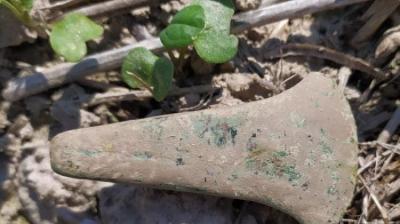 Horodło - A copper axe from the 4th to 3rd millennium BC identified with the Trypillia culture was found in the Horodło municipality in the Hrubieszów district. The Lublin Provincial Conservator of Monuments has described the valuable relic as being 7.4 cm in length, with a wide fan-shaped blade 4.1 cm wide, and a rectangular convex head measuring 0.9 cm x 0.6 cm. The Cucuteni-Trypillia culture was one of the most important in South-Eastern Europe. It originated as a result of interactions between different Neolithic groups in the Carpathian-Balkan region during the second half of the sixth millennium BCE. The fact that the ax appeared in eastern Poland is surprising because the territorial scope of the Trypillian culture covered the areas of today’s Bulgaria, Romania, Moldova, and western Ukraine.
Horodło - A copper axe from the 4th to 3rd millennium BC identified with the Trypillia culture was found in the Horodło municipality in the Hrubieszów district. The Lublin Provincial Conservator of Monuments has described the valuable relic as being 7.4 cm in length, with a wide fan-shaped blade 4.1 cm wide, and a rectangular convex head measuring 0.9 cm x 0.6 cm. The Cucuteni-Trypillia culture was one of the most important in South-Eastern Europe. It originated as a result of interactions between different Neolithic groups in the Carpathian-Balkan region during the second half of the sixth millennium BCE. The fact that the ax appeared in eastern Poland is surprising because the territorial scope of the Trypillian culture covered the areas of today’s Bulgaria, Romania, Moldova, and western Ukraine.
Poland’s oldest copper axe discovered in the Lublin region - Arkeonews
ARABIE SAOUDITE –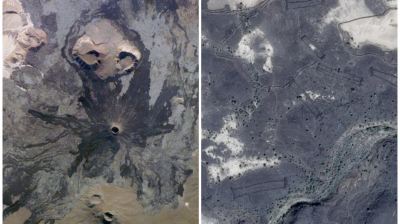 Gates of Hel - The region of Saudi Arabia, where the mysterious neolithic structures called the “Gates of Hell” are located, has around 400 structures dating back to 9,000 years ago. In addition to vast stretches of sand and gravel, the western half of the Arabian Peninsula is home to vast lava fields known as Haraat. One such field is the 14,000-square-kilometer Harrat Khaybar, which is located about 137 kilometers northeast of Al Madinah (Medina). With plenty of evidence of past volcanic activity, this is one of Saudi Arabia’s largest volcanic fields. The volcanic field was formed by eruptions that occurred over five million years, with the most recent event recorded between 600 and 700 AD, according to NASA. Archaeologists have discovered evidence that humans once lived hereWhen satellite imagery revealed hundreds of 9,000-year-old structures, experts were taken aback. The Stone Age walls, found built in volcanic fields, were named the Gates Of Hell because their short, thick connecting piles of brick resembled barred gates when viewed from above. , among the lava flow, even though this was once one of the planet’s most inhospitable places. Along with the gate-like constructions, archaeologists also discovered a series of ancient walls that bore a resemblance to kite shapes and circular structures that have been called bullseyes and wheels, respectively. So-called “desert kites” are largely understood to be stone fences that were probably used as animal traps. According to the European Geosciences Union (EGU), it’s possible that these hunting traps weren’t designed to capture and kill animals, and rather they could represent a first attempt at domestication of animals. The Sydney Morning Herald first reported in 1977 that “enigmatic circular stone formations, reminiscent of those found in Europe, are scattered throughout this arid country on hilltops and valleys remote from human habitation.” However, it was only with the more recent development of satellite images that these formations have been identified as the remains of Neolithic communities. Although the surrounding Bedouin tribes had long referred to the stone formations as “works of the old men,” David Kennedy of the University of Western Australia was the first to document them in the field of Western archaeology. Kennedy has identified approximately 400 stone walls. Studies have included aerial photography, and have documented structures called ‘Mustatil’, Arabic for rectangle, in the Khaybar and AlUla regions.
Gates of Hel - The region of Saudi Arabia, where the mysterious neolithic structures called the “Gates of Hell” are located, has around 400 structures dating back to 9,000 years ago. In addition to vast stretches of sand and gravel, the western half of the Arabian Peninsula is home to vast lava fields known as Haraat. One such field is the 14,000-square-kilometer Harrat Khaybar, which is located about 137 kilometers northeast of Al Madinah (Medina). With plenty of evidence of past volcanic activity, this is one of Saudi Arabia’s largest volcanic fields. The volcanic field was formed by eruptions that occurred over five million years, with the most recent event recorded between 600 and 700 AD, according to NASA. Archaeologists have discovered evidence that humans once lived hereWhen satellite imagery revealed hundreds of 9,000-year-old structures, experts were taken aback. The Stone Age walls, found built in volcanic fields, were named the Gates Of Hell because their short, thick connecting piles of brick resembled barred gates when viewed from above. , among the lava flow, even though this was once one of the planet’s most inhospitable places. Along with the gate-like constructions, archaeologists also discovered a series of ancient walls that bore a resemblance to kite shapes and circular structures that have been called bullseyes and wheels, respectively. So-called “desert kites” are largely understood to be stone fences that were probably used as animal traps. According to the European Geosciences Union (EGU), it’s possible that these hunting traps weren’t designed to capture and kill animals, and rather they could represent a first attempt at domestication of animals. The Sydney Morning Herald first reported in 1977 that “enigmatic circular stone formations, reminiscent of those found in Europe, are scattered throughout this arid country on hilltops and valleys remote from human habitation.” However, it was only with the more recent development of satellite images that these formations have been identified as the remains of Neolithic communities. Although the surrounding Bedouin tribes had long referred to the stone formations as “works of the old men,” David Kennedy of the University of Western Australia was the first to document them in the field of Western archaeology. Kennedy has identified approximately 400 stone walls. Studies have included aerial photography, and have documented structures called ‘Mustatil’, Arabic for rectangle, in the Khaybar and AlUla regions.
Saudi Arabia's "Gates of Hell" and Mysterious Structures - Arkeonews
NORVEGE – 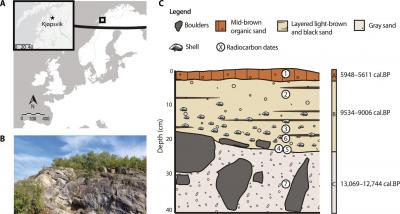 Storsteinhola - Paleo-archives are essential for our understanding of species responses to climate warming, yet such archives are extremely rare in the Arctic. Here, we combine morphological analyses and bulk-bone metabarcoding to investigate a unique chronology of bone deposits sealed in the high-latitude Storsteinhola cave system (68°50′ N 16°22′ E) in Norway. This deposit dates to a period of climate warming from the end of the Late Glacial [~13 thousand calibrated years before the present (ka cal B.P.)] to the Holocene thermal maximum (~5.6 ka cal B.P.). Paleogenetic analyses allow us to exploit the 1000s of morphologically unidentifiable bone fragments resulting in a high-resolution sequence with 40 different taxa, including species not previously found here. Our record reveals borealization in both the marine and terrestrial environments above the Arctic Circle as a naturally recurring phenomenon in past periods of warming.
Storsteinhola - Paleo-archives are essential for our understanding of species responses to climate warming, yet such archives are extremely rare in the Arctic. Here, we combine morphological analyses and bulk-bone metabarcoding to investigate a unique chronology of bone deposits sealed in the high-latitude Storsteinhola cave system (68°50′ N 16°22′ E) in Norway. This deposit dates to a period of climate warming from the end of the Late Glacial [~13 thousand calibrated years before the present (ka cal B.P.)] to the Holocene thermal maximum (~5.6 ka cal B.P.). Paleogenetic analyses allow us to exploit the 1000s of morphologically unidentifiable bone fragments resulting in a high-resolution sequence with 40 different taxa, including species not previously found here. Our record reveals borealization in both the marine and terrestrial environments above the Arctic Circle as a naturally recurring phenomenon in past periods of warming.
Ancient DNA and osteological analyses of a unique paleo-archive reveal Early Holocene faunal expansion into the Scandinavian Arctic | Science Advances
CHINE – 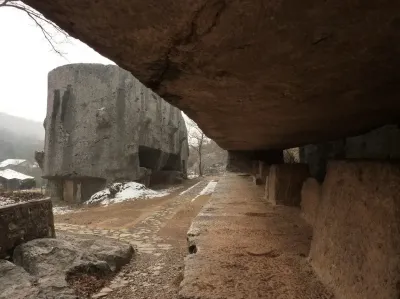 Yangshan Quarry- - The Yangshan Quarry is the site of an ancient limestone quarry, located to the east of Nanjing, China. The quarry has been active since the Six Dynasties period, a collective term for the six Han Chinese-ruled dynasties that existed from the early third century AD to the late sixth century AD. Limestone was sourced from the quarry for the construction of buildings and monuments in Nanjing, a city that served as the capital of various Chinese dynasties since it was founded in the fourth century BC. Most of the quarrying activities at Yangshan took place during the Ming dynasty, when in AD 1368, Zhu Yuanzhang (the Hongwu Emperor), established his capital at Nanjing. Zhu Di was determined to establish his own legitimacy and commissioned several major construction projects, including the Porcelain Tower of Nanjing, the Forbidden City, and a large mausoleum complex known as the Ming Xiaoling for his gather. He ordered the cutting of a giant stele at the Yangshan Quarry, which would be placed at the mausoleum in dedication of Zhu Yuanzhang. According to tradition, three thousand craftsmen spent three hundred days carving three stone blocks that formed the stele head (weighing 862 tons), the stele body (weighing 2,617 tons), and the stele base (weighing 6,198 tons). Upon realising the monumental tasks of transporting the stones from Yangshan to Ming Xiaoling, the project was abandoned in favour of a much smaller stone tablet known as the Shengong Shengde (“Divine Merits and Godly Virtues”). If the stele had been finished and assembled, then it would have stood 73 metres in height, making the monument the tallest stone structure in China. In 1956, the Yangshan Quarry was entered on the Jiangsu provincial register of protected cultural
Yangshan Quarry- - The Yangshan Quarry is the site of an ancient limestone quarry, located to the east of Nanjing, China. The quarry has been active since the Six Dynasties period, a collective term for the six Han Chinese-ruled dynasties that existed from the early third century AD to the late sixth century AD. Limestone was sourced from the quarry for the construction of buildings and monuments in Nanjing, a city that served as the capital of various Chinese dynasties since it was founded in the fourth century BC. Most of the quarrying activities at Yangshan took place during the Ming dynasty, when in AD 1368, Zhu Yuanzhang (the Hongwu Emperor), established his capital at Nanjing. Zhu Di was determined to establish his own legitimacy and commissioned several major construction projects, including the Porcelain Tower of Nanjing, the Forbidden City, and a large mausoleum complex known as the Ming Xiaoling for his gather. He ordered the cutting of a giant stele at the Yangshan Quarry, which would be placed at the mausoleum in dedication of Zhu Yuanzhang. According to tradition, three thousand craftsmen spent three hundred days carving three stone blocks that formed the stele head (weighing 862 tons), the stele body (weighing 2,617 tons), and the stele base (weighing 6,198 tons). Upon realising the monumental tasks of transporting the stones from Yangshan to Ming Xiaoling, the project was abandoned in favour of a much smaller stone tablet known as the Shengong Shengde (“Divine Merits and Godly Virtues”). If the stele had been finished and assembled, then it would have stood 73 metres in height, making the monument the tallest stone structure in China. In 1956, the Yangshan Quarry was entered on the Jiangsu provincial register of protected cultural
https://www.heritagedaily.com/2024/03/the-yangshan-quarry/151244
ITALIE – 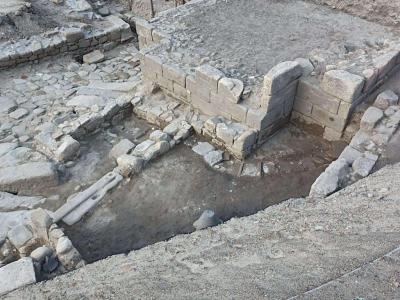 Tripi - In Tripi, a small village of just 750 souls in the Messina area, nestled between the Nebrodi and Peloritani mountains, archaeologists have brought to light the remains of an imposing stoa from the Greco-Roman era. These are remains of an imposing stoà (a long portico) from the Greco-Roman period, characterized by stone blocks and terracing that indicate the presence of a porticoed space typically adjacent to the square or agora. The discovery confirms the location of Abakainon, a city of very ancient origins mentioned by Diodorus Siculus. Forgotten for centuries, erased from history and maps, the Greek Abakainon, Abacaenum for the Romans, was one of the most important cities in Sicily. Devoted to agriculture and perfectly integrated in the commercial traffic of the time, it ruled over a vast territory stretching from the Tyrrhenian Sea to the slopes of Mount Etna. Abakainon was so influential that he even minted his own coin. However, its alliance with Carthage and later submission to Rome resulted in its destruction and disappearance. Up until recently, this was the widely accepted narrative. Coins found during recent excavations, however, appear to cast doubt on this widely accepted narrative. There had been reasonable conjecture regarding the precise location and extent of Abakainon within Tripi since the latter part of the 20th century. The existence of an ancient city of considerable size and wealth has now been unequivocally confirmed by excavation campaigns supported by the current municipal administration, providing new insights into the history of this site. Every area of Tripi village reflects the historic splendor of Abakainon, from the triumphal entrance encircled by fountains and ceramics to the bar at the center of the old town that serves as a hub for social interaction and the annual summer symposium. The urban architecture strewn throughout the hamlets of Casale, San Cono, and Campogrande recalls the old town plan, while the castle, a witness to bygone eras and legends, offers breathtaking views of the Aeolian Islands. Prominent necropolises from the late Classical and Hellenistic eras, like Contrada Cardusa, bear witness to the wealth and thriving past of Abakainon. Early excavations here turned up gold jewelry and exquisite decorations, demonstrating the wealth and taste of the prehistoric occupants. The museum, currently being refunctionalized, preserves these artifacts. In addition to reclaiming its identity, the village hopes to permanently revitalize its social, economic, and cultural development through the referendum to rename the town Tripi-Abakainon.
Tripi - In Tripi, a small village of just 750 souls in the Messina area, nestled between the Nebrodi and Peloritani mountains, archaeologists have brought to light the remains of an imposing stoa from the Greco-Roman era. These are remains of an imposing stoà (a long portico) from the Greco-Roman period, characterized by stone blocks and terracing that indicate the presence of a porticoed space typically adjacent to the square or agora. The discovery confirms the location of Abakainon, a city of very ancient origins mentioned by Diodorus Siculus. Forgotten for centuries, erased from history and maps, the Greek Abakainon, Abacaenum for the Romans, was one of the most important cities in Sicily. Devoted to agriculture and perfectly integrated in the commercial traffic of the time, it ruled over a vast territory stretching from the Tyrrhenian Sea to the slopes of Mount Etna. Abakainon was so influential that he even minted his own coin. However, its alliance with Carthage and later submission to Rome resulted in its destruction and disappearance. Up until recently, this was the widely accepted narrative. Coins found during recent excavations, however, appear to cast doubt on this widely accepted narrative. There had been reasonable conjecture regarding the precise location and extent of Abakainon within Tripi since the latter part of the 20th century. The existence of an ancient city of considerable size and wealth has now been unequivocally confirmed by excavation campaigns supported by the current municipal administration, providing new insights into the history of this site. Every area of Tripi village reflects the historic splendor of Abakainon, from the triumphal entrance encircled by fountains and ceramics to the bar at the center of the old town that serves as a hub for social interaction and the annual summer symposium. The urban architecture strewn throughout the hamlets of Casale, San Cono, and Campogrande recalls the old town plan, while the castle, a witness to bygone eras and legends, offers breathtaking views of the Aeolian Islands. Prominent necropolises from the late Classical and Hellenistic eras, like Contrada Cardusa, bear witness to the wealth and thriving past of Abakainon. Early excavations here turned up gold jewelry and exquisite decorations, demonstrating the wealth and taste of the prehistoric occupants. The museum, currently being refunctionalized, preserves these artifacts. In addition to reclaiming its identity, the village hopes to permanently revitalize its social, economic, and cultural development through the referendum to rename the town Tripi-Abakainon.
SUEDE – 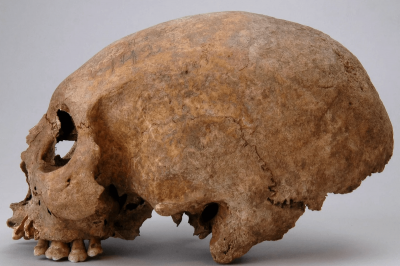 Gotland - In recent years, research has provided evidence for permanent body modification in the Viking Age. The latest of these investigations focused on the discovery of three Viking Age women from the Baltic Sea island of Gotland who had their skulls lengthened. This investigation sheds light on the fascinating tradition of body modification prevalent among the Norse and Vikings. The study, authored by Matthias Toplak and Lukas Kerk and published in the journal Current Swedish Archaeology, has identified around 130 individuals, mainly men, with horizontal grooves carved into their teeth, with a surprising concentration on Gotland. Although there have been many interpretations of these dental changes, ranging from slave markings to symbols of warrior elites, the researchers suggest that on closer examination they may have served as identity markers within a closed group of traders. Artificial cranial modifications in the Viking Age are so far known from just three female individuals from Gotland. Dating back to the latter part of the eleventh century, all three women were interred in different locations across Gotland. Their skull modifications gave them a unique and remarkable appearance, elongating their heads. Further details are discerned in two of the cases: one woman passed away between the ages of 25 and 30, while the other was between 55 and 60 years old. These cranial alterations, unlike dental modifications, appear to be alien to Scandinavian Viking culture; cases dating from the 9th to the 11th century AD have been found in Eastern Europe, suggesting that they may have originated there. The presence of these women with modified skulls raises questions about how Gotland society interacted with and reinterpreted this form of foreign identity, the practices of which are still unknown when they arrived in Scandinavia. “It remains unclear how the custom of skull modification reached Gotland,” the authors write. ”Either the three females from Havor, Ire, and Kvie were born in south-eastern Europe, perhaps as children of Gotlandic or East Baltic traders, and their skulls were modified there in the first years of life. Or the modifications were made on Gotland or in the eastern Baltic, respectively, and thus represent a cultural adoption long unknown to the Scandinavian Viking Age. A common background of the three females can be assumed due to the close chronological dating of the three burials, and especially due to the very similar execution of the skull modifications.” These three women’s elaborately decorated tombs, which feature jewelry and other accessories typical of Gotland women’s clothing, suggest they were accepted and integrated into the local community. While the religious affiliations of these women remain unknown, Toplak and Kerk propose they were laid to rest within a Christian framework.
Gotland - In recent years, research has provided evidence for permanent body modification in the Viking Age. The latest of these investigations focused on the discovery of three Viking Age women from the Baltic Sea island of Gotland who had their skulls lengthened. This investigation sheds light on the fascinating tradition of body modification prevalent among the Norse and Vikings. The study, authored by Matthias Toplak and Lukas Kerk and published in the journal Current Swedish Archaeology, has identified around 130 individuals, mainly men, with horizontal grooves carved into their teeth, with a surprising concentration on Gotland. Although there have been many interpretations of these dental changes, ranging from slave markings to symbols of warrior elites, the researchers suggest that on closer examination they may have served as identity markers within a closed group of traders. Artificial cranial modifications in the Viking Age are so far known from just three female individuals from Gotland. Dating back to the latter part of the eleventh century, all three women were interred in different locations across Gotland. Their skull modifications gave them a unique and remarkable appearance, elongating their heads. Further details are discerned in two of the cases: one woman passed away between the ages of 25 and 30, while the other was between 55 and 60 years old. These cranial alterations, unlike dental modifications, appear to be alien to Scandinavian Viking culture; cases dating from the 9th to the 11th century AD have been found in Eastern Europe, suggesting that they may have originated there. The presence of these women with modified skulls raises questions about how Gotland society interacted with and reinterpreted this form of foreign identity, the practices of which are still unknown when they arrived in Scandinavia. “It remains unclear how the custom of skull modification reached Gotland,” the authors write. ”Either the three females from Havor, Ire, and Kvie were born in south-eastern Europe, perhaps as children of Gotlandic or East Baltic traders, and their skulls were modified there in the first years of life. Or the modifications were made on Gotland or in the eastern Baltic, respectively, and thus represent a cultural adoption long unknown to the Scandinavian Viking Age. A common background of the three females can be assumed due to the close chronological dating of the three burials, and especially due to the very similar execution of the skull modifications.” These three women’s elaborately decorated tombs, which feature jewelry and other accessories typical of Gotland women’s clothing, suggest they were accepted and integrated into the local community. While the religious affiliations of these women remain unknown, Toplak and Kerk propose they were laid to rest within a Christian framework.
Three Strange Skull Modifications Discovered in Viking Women - Arkeonews



